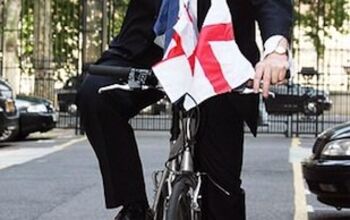UK: London Congestion Tax Extension Eliminated
London Mayor Boris Johnson finally fulfilled his campaign promise to cut 230,000 residents out of the area where the UK capital’s congestion tax is imposed. The last £8 (US $12.40) toll imposed on motorists driving through the boroughs of Kensington, Chelsea and Westminster during business hours was collected Friday at 6pm. These areas were part of the so-called Western Extension Zone added by former Mayor Ken Livingstone, just before voters threw him out of office in 2008.
“The long desired eradication of the western extension is my Christmas present to the people who live, work and shop in west London,” Johnson said in a statement. “My predecessor willfully ignored their objections, I promised a fresh consultation and I am a man of my word.”
The pledge to roll back the extension was a key campaign issue for Johnson who later surveyed 28,000 in the affected area and found that 62 percent of residents and 86 percent of businesses wanted the zone eliminated. Only 19 percent indicated support for preserving the extension unchanged. Although Livingstone insisted that the congestion charge was intended solely to reduce traffic levels downtown, Transport for London data show it failed to achieve this goal. Documented journey times inside the charging zone in 2007 were the same as in 2002, before the tax was collected, according to a 2008 report. Another, independent study found no reduction in pollution within zone. After accounting for £131 million (US $215 million) in overhead, however, the complicated system did provide transit officials with £137 million (US $225 million) in revenue, which came primarily from late payment penalty tickets. Those fines go away with the introduction, for the first time, of an automated system that deducts toll charges from a credit card account.
“Our new Autopay system means motorists need never be clobbered by fines and, with the introduction of a revamped environmental discount, this is undoubtedly the year we have made the congestion charge far fairer,” Johnson said.
The news is not all good for the city’s motorists. Beginning January 4, the tax will rise to £10 (US $15.50) to shore up Transport for London’s mass transit budget.
[Courtesy: Thenewspaper.com]
More by The Newspaper
Latest Car Reviews
Read moreLatest Product Reviews
Read moreRecent Comments
- ToolGuy I do like the fuel economy of a 6-cylinder engine. 😉
- Carson D I'd go with the RAV4. It will last forever, and someone will pay you for it if you ever lose your survival instincts.
- THX1136 A less expensive EV would make it more attractive. For the record, I've never purchased a brand new vehicle as I have never been able to afford anything but used. I think the same would apply to an EV. I also tend to keep a vehicle way longer than most folks do - 10+ years. If there was a more affordable one right now then other things come to bear. There are currently no chargers in my immediate area (town of 16K). I don't know if I can afford to install the necessary electrical service to put one in my car port right now either. Other than all that, I would want to buy what I like from a cosmetic standpoint. That would be a Charger EV which, right now, doesn't exist and I couldn't afford anyway. I would not buy an EV just to be buying an EV. Nothing against them either. Most of my constraints are purely financial being 71 with a disabled wife and on a fixed income.
- ToolGuy Two more thoughts, ok three:a) Will this affordable EV have expressive C/D pillars, detailing on the rocker panels and many many things happening around the headlamps? Asking for a friend.b) Will this affordable EV have interior soft touch plastics and materials lifted directly from a European luxury sedan? Because if it does not, the automotive journalists are going to mention it and that will definitely spoil my purchase decision.c) Whatever the nominal range is, I need it to be 2 miles more, otherwise no deal. (+2 rule is iterative)
- Zerofoo No.My wife has worked from home for a decade and I have worked from home post-covid. My commute is a drive back and forth to the airport a few times a year. My every-day predictable commute has gone away and so has my need for a charge at home commuter car.During my most recent trip I rented a PHEV. Avis didn't bother to charge it, and my newly renovated hotel does not have chargers on the property. I'm not sure why rental fleet buyers buy plug-in vehicles.Charging infrastructure is a chicken and egg problem that will not be solved any time soon.


































Comments
Join the conversation
Good riddance to Red Ken and his congestion charge.
It should never have been associated with pollution - the congestion zone serves only one purpose, and that is to improve traffic circulation. The tremendous investment in London's bus system over the past decade has been made worthwhile by ensuring that the almost continual grid lock in much of the city has been cleared. It's now a pleasure to walk, cycle, drive or ride the bus through town, any time of the day. This news will, of course, be of little interest to US diplomats, who to date have refused to pay in excess of £3,500,000 in congestion charges. "Special relationship" my arse.